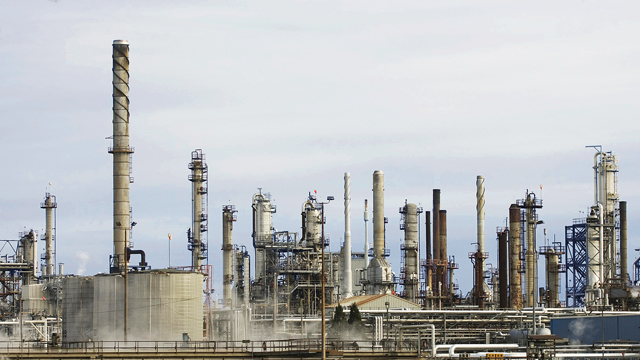Alkylierung von gecracktem Naphtha
Um Benzin mit außergewöhnlicher Klopffestigkeit und minimaler Rußbildung zu erhalten, ist Alkylatblending erforderlich. Kompakte, hoch-effiziente und korrosionsbeständige Compabloc-Wärmeübertrager von Alfa Laval helfen Ihnen bei der sicheren, energieeffizienten und wirtschaftlichen Produktion von Alkylaten – egal, ob Sie Schwefelsäure oder Flusssäure als Katalysator einsetzen.
Improving cracked naphtha alkylation processes
Converting isobutanes and alkenes into alkylates requires both expertise and reliable equipment. Alfa Laval has the know-how, heat transfer technology and services that provide refineries with energy savings, reduced maintenance requirements, increased production and low investment costs. This contributes to the overall profitability of your refinery.
Higher energy efficiency
Alkylation processes include several fractionation columns where various hydrocarbon streams are separated from the alkylation mix. Recovering and transferring the energy between these columns is critical to the overall energy efficiency and environmental footprint of the process.
One such heat recovery position is to preheat the deisobutanizer (DIB) feed, using the column bottoms fraction. Maximizing energy recovery here minimizes the energy consumption of the DIB column reboiler as well as the alkylate final cooler cooling water requirements. Using Alfa Laval Compabloc heat exchangers contributes to maximum energy recovery from the bottom fraction into the DIB feed.
Capacity increase
Operating the sulphuric acid alkylation process at lowest possible temperature has a very positive effect on the alkylate yield. However, this can put very high demands on the refrigerant plant. With Alfa Laval Compabloc exchangers, it is possible to cool the alkylation feed to a minimum temperature before the reactor, using the reactor effluent as the cooling media. Another way of maximizing alkylate yields is to use our Compabloc heat exchangers to optimize cooling and condensing of the recycled propane/refrigerant.
Minimizing CAPEX
Because alkylation processes use highly concentrated acids as catalysts, several heat exchanger services must be able to handle process fluids containing either sulphuric acid or hydrofluoric acid. This requires high grade of metal selected for the heat exchangers in use and makes traditional shell-and-tube heat exchangers a very expensive alternative for such services.
Alfa Laval Compabloc heat exchangers provide heat transfer efficiency that is three to fives times higher than shell-and tube exchangers which means the heat transfer surface area will also be three to five times less. In addition, because Compabloc heat transfer plates are thin – at most only 1.2 mm – the amount of high-grade material required will be minimized This translates into high efficiency heat transfer that maximizes heat recovery while minimizing investment costs and eliminating corrosion problems compared to shell and tube heat exchangers.
Proven technology for cracked naphtha alkylation
Installed in alkylation units using sulphuric acid and hydrofluoric acid, Alfa Laval Compabloc heat exchangers operate as reactor feed/effluent interchangers, fractionator feed/bottoms interchangers, condensers and reboilers and alkylate final coolers in refineries around the world.

